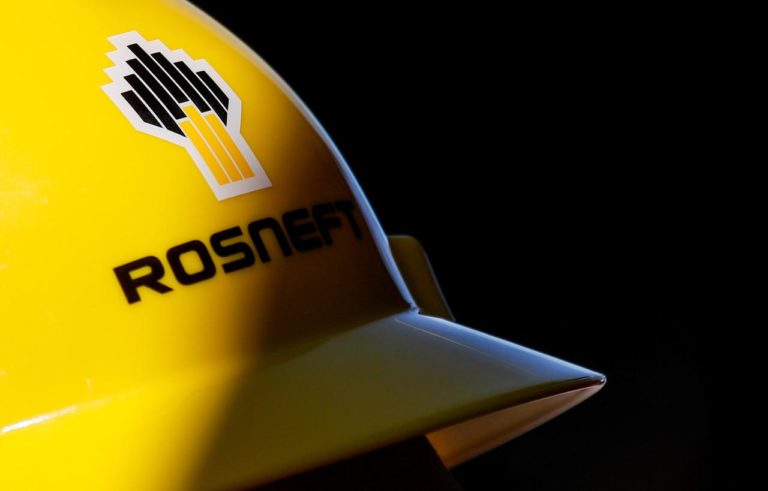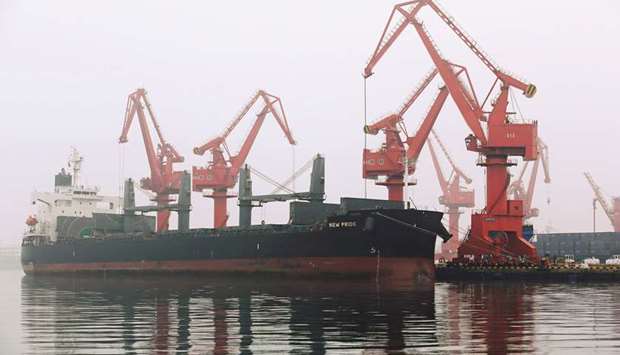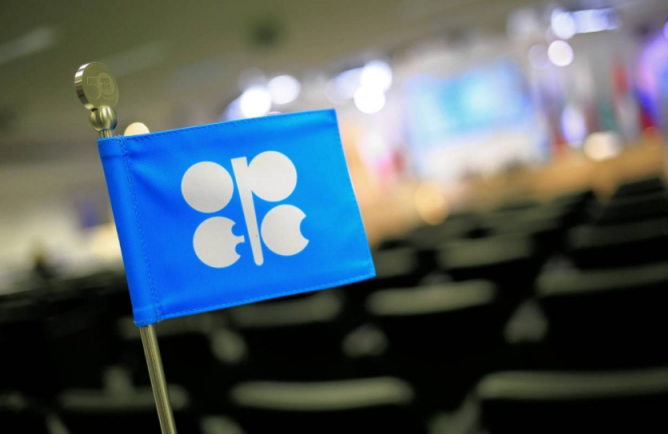Lukoil makes inroads offshore

Russian-Kazakh waters in the Caspian Sea are central to the company’s plans
Russian oil major Lukoil is pushing ahead with a raft of new projects in the Caspian Sea, as it looks to grow its offshore business and counter decline at its older fields in Western Siberia. The private operator revealed in early June that it had struck a preliminary deal to explore an area off the shore of Kazakhstan. The I-P-2 block lies in waters 300-400 metres deep and 130km from the port of Aktau. Lukoil will now engage in talks with KazMunayGas (KMG), Kazakhstan’s national oil company, to draw up an E&P contract and form a joint venture to develop the site. The Caspian Sea is integral to Lukoil’s growth plans. The company aims to ramp up production in the area by more than a quarter next year to 180,000boe/d—equivalent to almost 10pc of its overall oil and gas output. Lukoil has come a long way since entering the region in the mid-1990s, when it embarked on a drilling campaign that led to the discovery of six major oil and gas deposits in Russia’s offshore zone. The first of the fields, Korchagin, entered production in 2010 and was joined by the larger Filanovsky project six years later. Additional development is underway at both sites, and Lukoil plans to commission a third field known as Rakushechnoye in 2023. Lukoil’s current Caspian production is confined to Russian waters, although the company is looking to build up its Kazakh operations as well. In addition to I-P-2, it has committed to spending $270mn on exploring Kazakhstan’s Zhenis block under an E&P contract it finalised with KMG earlier this year. Zhenis, situated 80km from the shore in water 75-100 metres deep, has been assessed by Kazakh authorities to contain 4.5bn boe in potential resources. Lukoil also operates the Tsentralnoye and Khvalynskoye fields that straddle the Russian-Kazakh maritime border, although development is in limbo because of their remoteness from land and an outstanding legal dispute. The Kazakh government has handed out dozens of contracts for offshore development over the past two decades, although many of these projects have disappointed. Lukoil’s previous exploration venture at the Atash and Tyub-Karagan blocks ended in failure in 2011, when the company withdrew after drilling several dry wells.
Kazakh incentives
Lukoil’s CEO Vagit Alekperov explained the company’s renewed interest in offshore Kazakhstan early last year, citing a recent overhaul in the country’s taxation system. Offshore operators can now opt to pay an income-based tax in lieu of mineral extraction tax (MET), oil export duty and other levies. Critically, this tax does not apply when oil prices dip below $50/bl, offering operators some protection from market volatility. The Caspian’s operational challenges, such as logistical issues, difficult climate conditions and reservoir complexity, can make tax relief essential for a project’s success. Lukoil notably pays no export duty and a reduced rate of MET on its Russian fields in the area. Moscow-based ratings agency ACRA estimates the current breakeven cost of these projects, taking the tax incentives into account, at $35/bl. “Tax breaks are necessary due to the high initial capital costs and the relatively high cost of production,” an ACRA analyst told Petroleum Economist. “The IRR [internal rate of return] of Caspian projects is significantly higher than that of the mainland [Russian] projects, but this can be considered compensation for the higher risk.” According to Ashley Sherman, a Caspian research analyst at Wood Mackenzie, changes to Kazakhstan’s tax and subsoil legislation have “certainly revitalised international interest” in its offshore zone. Earlier this year Italy’s Eni—a shareholder in Kazakhstan’s flagship Karachaganak and Kashagan projects— also signed up to explore the offshore Abay block. While established players like Eni and Lukoil are keen to search new areas, Kazakhstan has struggled to bring new investors into the region. “These companies can look to other offshore exploration hot spots, elsewhere in the world, that offer lower costs, greater rig availability and a clearer path to quick development of any discovery,” says Sherman. https://www.petroleum-economist.com/articles/politics-economics/europe-eurasia/2019/lukoil-makes-inroads-offshore


 Gerald Butt, Petroleum Economist Two years after the economic and political boycott on Qatar, the Gulf state is pressing on with LNG expansion plans. Qatar Petroleum (QP) in April asked three joint ventures to bid for the main engineering, procurement and construction (EPC) contract for four mega-LNG trains, each with 8.8mn t/yr capacity, and related facilities. A month later it asked firms to bid to carry out EPC work for LNG storage and loading facilities. QP announced in 2017, after the boycott was imposed, that it planned to increase LNG output capacity from 77mn t/yr to 100mn t/yr, by producing more gas from the vast offshore North field. The following year it unveiled an even more ambitious plan — to target capacity of 110mn t/yr. And despite the fact that there is no end to the political dispute that has destroyed the credibility of the Gulf Cooperation Council, Qatar is not looking back. The consortiums competing for the contracts to build the mega-trains are: Chiyoda and Technip; JGC Corporation and Hyundai Engineering and Construction; and Saipem, McDermott and CTCI Corporation. The announcement of the EPC contract is expected in January 2020, with work to be completed by 2024. Qatar believes that the new development will come on stream just as demand for LNG will start to exceed supply. McDermott International has been given the EPC role for eight new offshore jackets in the North field. Onshore site preparation for the four LNG trains at Ras Laffan is being carried out by Consolidated Contractors Company and Teyseer Trading and Contracting Company. Chiyoda is completing the FEED work for the onshore facilities, and further contract awards related to the expansion project are expected in the coming months.
Gerald Butt, Petroleum Economist Two years after the economic and political boycott on Qatar, the Gulf state is pressing on with LNG expansion plans. Qatar Petroleum (QP) in April asked three joint ventures to bid for the main engineering, procurement and construction (EPC) contract for four mega-LNG trains, each with 8.8mn t/yr capacity, and related facilities. A month later it asked firms to bid to carry out EPC work for LNG storage and loading facilities. QP announced in 2017, after the boycott was imposed, that it planned to increase LNG output capacity from 77mn t/yr to 100mn t/yr, by producing more gas from the vast offshore North field. The following year it unveiled an even more ambitious plan — to target capacity of 110mn t/yr. And despite the fact that there is no end to the political dispute that has destroyed the credibility of the Gulf Cooperation Council, Qatar is not looking back. The consortiums competing for the contracts to build the mega-trains are: Chiyoda and Technip; JGC Corporation and Hyundai Engineering and Construction; and Saipem, McDermott and CTCI Corporation. The announcement of the EPC contract is expected in January 2020, with work to be completed by 2024. Qatar believes that the new development will come on stream just as demand for LNG will start to exceed supply. McDermott International has been given the EPC role for eight new offshore jackets in the North field. Onshore site preparation for the four LNG trains at Ras Laffan is being carried out by Consolidated Contractors Company and Teyseer Trading and Contracting Company. Chiyoda is completing the FEED work for the onshore facilities, and further contract awards related to the expansion project are expected in the coming months.  Saad al-Kaabi Minister of Energy and Chairman of QP New LNG carriers To cater for the North Field expansion and Qatar’s offtake from the Golden Pass LNG export project in the US, QP in April issued an invitation to tender for the construction of LNG carriers. QP CEO Saad al-Kaabi says the initial order would be to “deliver 60 LNG carriers in support of the planned production expansion, with a potential to exceed 100 new carriers over the next decade”. 110mn t/yr — Qatar’s planned LNG capacity
Saad al-Kaabi Minister of Energy and Chairman of QP New LNG carriers To cater for the North Field expansion and Qatar’s offtake from the Golden Pass LNG export project in the US, QP in April issued an invitation to tender for the construction of LNG carriers. QP CEO Saad al-Kaabi says the initial order would be to “deliver 60 LNG carriers in support of the planned production expansion, with a potential to exceed 100 new carriers over the next decade”. 110mn t/yr — Qatar’s planned LNG capacity  Roudi Baroudi Energy Economist During 2018, Qatar maintained its position as the largest exporter of LNG, with 28pc of global market share, according to the International Gas Union. However, with other countries increasing capacity, Qatar’s share has been falling. Australia has now overtaken Qatar as the biggest producer — but will be nudged out of that spot when the Ras Laffan expansion is complete. Call for talks In the meantime, Qatar continues to call for talks to end the political dispute with its neighbours, but they appear to have no interest in ending the boycott. “The countries besieging Qatar know it is ready to sit down at the negotiating table, whether under the aegis of the GCC or any other set-up,” says Roudi Baroudi, a Doha-based energy consultant. “Qatari officials remain hopeful that their counterparts will soon change course and join the search for sovereign, fair and workable solutions.” For now at least, Qatar is prepared to carry on regardless — without undue concern. The IMF said in late 2018 that “significant fiscal and external buffers have enabled Qatar to successfully absorb the adverse shocks from the 2014-16 decline in oil prices and the diplomatic rift. We anticipate overall real GDP growth of 3.1pc in 2019, with still robust non-hydrocarbon growth and recovery in oil and gas production.”
Roudi Baroudi Energy Economist During 2018, Qatar maintained its position as the largest exporter of LNG, with 28pc of global market share, according to the International Gas Union. However, with other countries increasing capacity, Qatar’s share has been falling. Australia has now overtaken Qatar as the biggest producer — but will be nudged out of that spot when the Ras Laffan expansion is complete. Call for talks In the meantime, Qatar continues to call for talks to end the political dispute with its neighbours, but they appear to have no interest in ending the boycott. “The countries besieging Qatar know it is ready to sit down at the negotiating table, whether under the aegis of the GCC or any other set-up,” says Roudi Baroudi, a Doha-based energy consultant. “Qatari officials remain hopeful that their counterparts will soon change course and join the search for sovereign, fair and workable solutions.” For now at least, Qatar is prepared to carry on regardless — without undue concern. The IMF said in late 2018 that “significant fiscal and external buffers have enabled Qatar to successfully absorb the adverse shocks from the 2014-16 decline in oil prices and the diplomatic rift. We anticipate overall real GDP growth of 3.1pc in 2019, with still robust non-hydrocarbon growth and recovery in oil and gas production.”  In Baroudi’s view, “while Qataris continue to face illegal and discriminatory measures attached to the commercial blockade, their country has the wherewithal to sustain the current situation for as long as it takes”.
In Baroudi’s view, “while Qataris continue to face illegal and discriminatory measures attached to the commercial blockade, their country has the wherewithal to sustain the current situation for as long as it takes”. 






ZURICH – Finland’s central bank governor, Olli Rehn, has reiterated his call for the European Central Bank to conduct a long-overdue review of its policy framework. The upcoming change of leadership at the institution – with Christine Lagarde, the International Monetary Fund’s managing director since 2011, likely to succeed Mario Draghi as president – offers an important opportunity to heed that call.
When the ECB was established 20 years ago, central banks were generally not too clear about the details of their policy frameworks. At that time, some ambiguity may have been helpful, because of the flexibility it offered when the ECB started operating. Furthermore, it allowed central bankers with different experiences and perspectives to agree on a framework, even though they may not have agreed on its precise details.
But the world has changed considerably since then, and the public is now demanding far more clarity. How can the ECB offer that, 16 years after the last review of its monetary-policy framework?
Since that review, conducted in 2003, the global financial crisis, and the ensuing European debt crisis, prompted the ECB to adopt a plethora of new policy instruments. These crisis measures – which have been deeply unpopular, particularly in Germany – can be justified only to the extent that they have been effective, and this must be evaluated. Moreover, as Rehn, who sits on the ECB’s governing council, has noted, long-run structural trends – such as population aging, lower long-term interest rates, and climate change – must be considered.
The effectiveness of ECB policy requires the members of the governing council to be singing from the same song sheet. They need a shared understanding of Europe’s long-term goals and the strengths and weaknesses of various policy instruments. And, in order to strengthen accountability and support smart decision-making, they need to be able to spell out the details of their monetary-policy strategies in ways that the public can understand.
As it stands, such clarity is at times hard to find, even when it comes to some of the most fundamental elements of the ECB’s policy strategy. Price stability – the ECB’s primary objective – is currently expressed as “inflation below, but close to, 2%.” Does 1% inflation meet that condition, or is it too low, demanding more monetary-policy accommodation? Different members of the ECB’s governing council may well have different answers to this question, and thus support different policies.
The same goes for the questions of whether the ECB’s inflation target is symmetric – with the authorities intervening as vigorously when inflation is too low as they do when inflation is too high – and whether inflation should be measured over time or at a given moment. If, over some period, the inflation rate ranges from 0% to 4%, but averages to “below, but close to, 2%,” has the objective been achieved?
The answer has major policy implications. If inflation is measured over time, the ECB could accept, or perhaps even aim for, a somewhat higher inflation rate in the medium term, to compensate for the excessively low inflation of recent years. If the public came to believe that a period of above-target inflation was likely, the expected real interest rate would fall, giving a jolt to the economy.
Of course, Draghi has established in speeches and press conferences that, in his view, the inflation target is symmetric; 1% inflation is too low; and the inflation rate should be measured over the “medium term.” But it is not clear whether this view is broadly shared within the ECB’s governing council.
Inflation targeting is hardly the only area where ambiguity is hampering effective policymaking and leaving market participants wondering what to expect. The ECB’s outright monetary transactions (OMT) scheme – whereby the ECB promises to purchase bonds issued by eurozone member states on secondary sovereign-bond markets – is also generating significant uncertainty.
OMT, Draghi’s chosen tool for fulfilling his 2012 vow to do “whatever it takes to preserve the euro,” was controversial from the moment it was announced, with Bundesbank President Jens Weidmann – one of Lagarde’s main rivals for the ECB presidency – arguing fiercely against it in public. But that was seven years ago, and OMT has never actually been used. Is the governing council still committed to it? Or have the events – and council membership changes – of the last few years rendered that commitment obsolete?
With public debt in Greece and Italy still far too high, the eurozone still at risk of slipping into a recession that would significantly worsen both countries’ fiscal positions, and Italian politics as volatile as ever, it would pay to know. A review of the kind Rehn demands would provide the needed answers – and put the ECB on much sounder footing for a new era of leadership.
STEFAN GERLACH